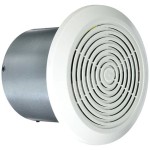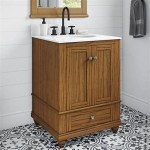```html
How to Stop Bathroom Mold
Bathrooms, with their inherent humidity and warmth, provide ideal breeding grounds for mold. Mold growth can lead to a variety of health problems, from allergic reactions to respiratory issues, and can also cause structural damage to the bathroom itself. Therefore, proactive measures to prevent and eliminate mold in the bathroom are essential for maintaining a healthy and safe living environment. This article outlines comprehensive strategies for stopping bathroom mold, encompassing prevention techniques, cleaning protocols, and addressing underlying moisture issues.
Ventilation is Paramount
Adequate ventilation is the cornerstone of mold prevention in the bathroom. Mold thrives in stagnant, humid air. The primary goal is to remove excess moisture generated during showers and baths as quickly and efficiently as possible. This is achieved through a combination of mechanical and natural ventilation techniques.
The first line of defense is a properly functioning exhaust fan. The fan should be adequately sized for the square footage of the bathroom. A general rule of thumb is that the fan should provide at least one cubic foot per minute (CFM) of airflow per square foot of bathroom space. For example, a 50-square-foot bathroom requires a fan rated for at least 50 CFM. If the bathroom has a high ceiling (over 8 feet), a more powerful fan may be necessary.
The exhaust fan should be used consistently during and after showering or bathing. It is recommended to leave the fan running for at least 20 minutes after finishing to ensure that all excess moisture is removed from the air. Many newer exhaust fans come equipped with timers or humidity sensors that automatically turn off the fan after a set period or when the humidity level drops to a predetermined threshold. This helps to conserve energy while still effectively controlling moisture.
In addition to mechanical ventilation, natural ventilation can also be beneficial. Opening a window during and after showering or bathing can help to promote airflow and remove moisture. However, this is only effective if the outdoor humidity is lower than the indoor humidity. If the outdoor air is already saturated with moisture, opening a window may actually exacerbate the problem. Be mindful of outdoor air quality as well, especially in areas with high pollen counts or air pollution.
Regular maintenance of the exhaust fan is crucial for its effectiveness. Dust and debris can accumulate on the fan blades and motor, reducing its airflow capacity. The fan should be cleaned at least twice a year, or more frequently if dust accumulation is noticeable. To clean the fan, turn off the power at the circuit breaker before removing the fan cover. Use a vacuum cleaner with a brush attachment to remove dust from the fan blades, motor, and housing. The fan cover can be washed with soap and water.
Beyond running the fan, consider the placement of bathroom items. Avoid overcrowding the bathroom with excessive towels or decorative items as this can restrict airflow and create pockets of stagnant air where mold can flourish. Allow adequate space around surfaces for air to circulate freely.
Control Moisture Sources
Beyond simply removing moisture after it's generated, a key aspect of mold prevention is controlling moisture sources within the bathroom. This involves addressing leaks, managing condensation, and adopting hygienic practices.
Leaks are a primary cause of mold growth. Regularly inspect plumbing fixtures, including faucets, showerheads, toilets, and pipes, for any signs of leaks or drips. Even small, infrequent leaks can provide sufficient moisture for mold to thrive. Repair any leaks promptly and thoroughly. If a leak is difficult to locate or repair, consider consulting a professional plumber.
Condensation is another common source of moisture in bathrooms. Condensation occurs when warm, moist air comes into contact with cold surfaces, such as mirrors, windows, and tile walls. To minimize condensation, ensure that the bathroom is adequately insulated. Insulating exterior walls and windows can help to prevent cold surfaces from forming. Also, consider using insulated shower curtains or doors to contain moisture within the shower area. Wipe down surfaces after showering or bathing to remove any excess moisture.
Hygienic practices play a significant role in controlling moisture and preventing mold growth. Always wring out washcloths and sponges thoroughly after use and hang them to dry in a well-ventilated area. Avoid leaving damp towels or clothing lying on the floor, as this creates a breeding ground for mold. Launder towels and bath mats regularly to remove mold spores and prevent them from spreading. Clean shower curtains or doors frequently to remove soap scum and mildew. Regularly clean and disinfect the toilet bowl and surrounding areas to prevent the growth of mold and bacteria.
Pay close attention to grout and caulk, as these areas are particularly susceptible to mold growth. Grout is porous, making it easily absorb moisture, while caulk can crack and peel, creating crevices where mold can accumulate. Regularly clean grout with a grout brush and a solution of bleach and water. Inspect caulk for cracks and peeling, and replace it as needed. Consider using mold-resistant caulk specifically designed for bathrooms.
Consider the materials used in the bathroom renovation or construction. Opt for mold-resistant building materials, such as mold-resistant drywall and paint. These materials contain additives that inhibit the growth of mold. Ensure that proper waterproofing measures are in place, especially in shower areas and around tubs.
Regular Cleaning and Disinfection
Consistent cleaning and disinfection are crucial for preventing mold growth in the bathroom. While ventilation and moisture control are essential, they are not sufficient on their own. Regular cleaning removes dirt, soap scum, and other organic matter that mold can feed on, while disinfection kills any mold spores that may be present.
Establish a regular cleaning schedule for the bathroom. Aim to clean the bathroom at least once a week, or more frequently if necessary. Focus on areas that are prone to mold growth, such as the shower, tub, sink, toilet, and floor. Use a bathroom cleaner that contains a disinfectant to kill mold spores and bacteria. Follow the manufacturer's instructions for proper use and safety precautions.
For stubborn mold stains, a solution of bleach and water can be effective. Mix one part bleach with ten parts water. Apply the solution to the affected area and let it sit for a few minutes before scrubbing with a brush or sponge. Rinse thoroughly with water. Always wear gloves and eye protection when working with bleach. Ensure that the bathroom is well-ventilated when using bleach to avoid inhaling harmful fumes. Never mix bleach with ammonia, as this can create toxic gases.
Hydrogen peroxide is a less harsh alternative to bleach for killing mold. Spray hydrogen peroxide directly onto the moldy surface and let it sit for 10-15 minutes. Then, scrub the area with a brush and rinse with water. Hydrogen peroxide is effective at killing mold spores and can also help to lighten stains.
Vinegar is another natural cleaning agent that can be used to kill mold. Spray vinegar directly onto the moldy surface and let it sit for an hour. Then, wipe the area clean with a damp cloth. Vinegar is a good option for sensitive individuals or those who prefer to avoid harsh chemicals.
Tea tree oil is a natural antifungal agent that can be used to prevent mold growth. Mix a few drops of tea tree oil with water in a spray bottle. Spray the mixture onto surfaces that are prone to mold growth, such as the shower walls and floor. Do not rinse. The tea tree oil will help to inhibit the growth of mold spores.
After cleaning, ensure that the bathroom surfaces are thoroughly dried. Use a clean towel or squeegee to remove any excess water. This will help to prevent mold from growing back.
Regularly inspect grout and caulk for signs of mold growth. If mold is present, scrub the affected areas with a grout brush and a cleaning solution. If the grout or caulk is severely stained or damaged, it may need to be replaced. Consider using a mold-resistant grout and caulk to prevent future mold growth.
Pay attention to the shower curtain or door. These items are often exposed to moisture and can quickly become a breeding ground for mold. Wash the shower curtain or door regularly with soap and water. If the shower curtain is made of fabric, it can be machine washed. If the shower door is made of glass or plastic, it can be cleaned with a glass cleaner or a solution of vinegar and water.
By implementing these strategies, homeowners can effectively prevent and eliminate mold in the bathroom, creating a healthier and more comfortable living environment. Consistent effort and attention to detail are key to long-term mold control.
```
How To Prevent Mold In Bathroom 6 Simple Powerful Ways

Bathroom Mould And Mildew How To Stop It Superstone Radiators

How To Prevent Bathroom Mold The Bath Showcase

Detecting And Preventing Mold Growth On Your Bathroom Ceiling Trusscore
:max_bytes(150000):strip_icc()/tricks-keep-bathroom-mold-free-326859-06-6949843907964d98aeb834e44362ecb3.jpg?strip=all)
10 Tricks To Prevent Mold In Your Bathroom

How To Prevent Bathroom Mold From Taking Over Allergy Air

Bathroom Mold How To Kill On Ceiling

How To Stop Mould In The Bathroom Tips And Solutions

How To Stop Bathroom Mold Big B S Plumbing

How To Stop Mould In The Bathroom







